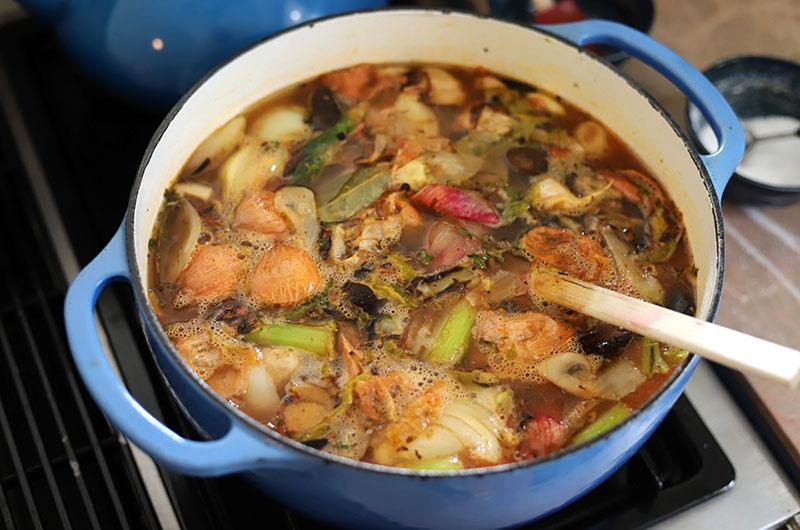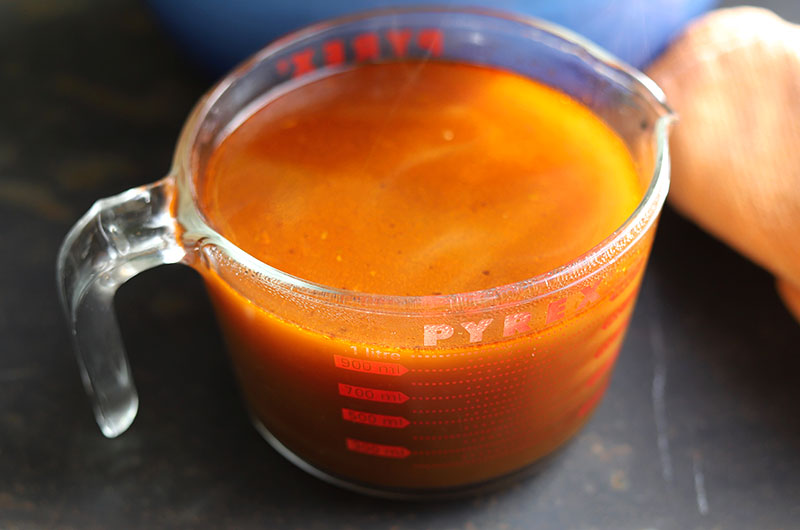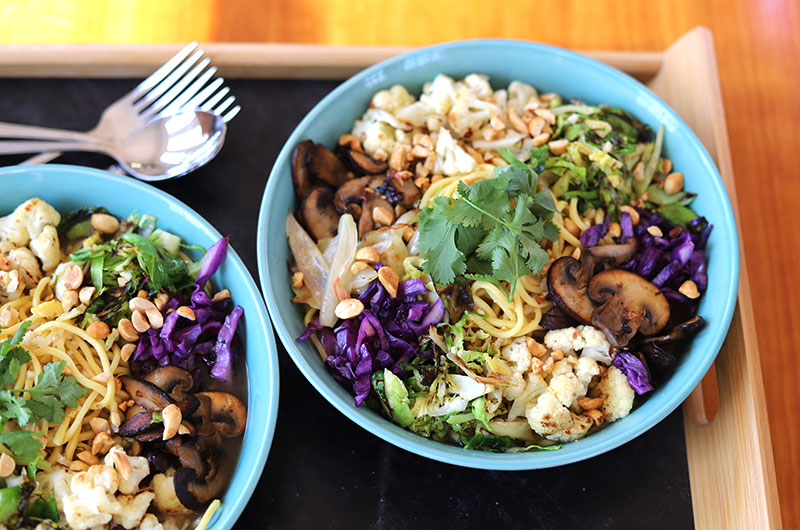I am not a fan of store-bought vegetable broth; so many brands taste entirely of celery or onion, or are too salty. If I don’t have time to make my own veggie broth, I’ll use miso or dried mushrooms to bring flavor to a vegetarian soup. But with a little time, veggie broth is easy to make and of course freezes well. (It's delicious in this "Build Your Own" Ramesque Noodle Soup.)
The secret to good flavor is browning the vegetables before adding the water, and then being generous with aromatics. (When I have fennel and gingeron hand, I add them to the mix, though they aren't necessary.)

A note about seasoning a broth: I only add 1 teaspoon (total) salt to the broth while it is cooking so that you have some flexibility when seasoning later. Since I've also given you some flexibility with how long you cook the broth (and therefore how long it reduces), you will have to taste the broth at the end for seasoning. And if you are going to use the broth in a soup or any other preparation, you might want to leave it gently seasoned or underseasoned. On the other hand, if you want to just use the broth simply, perhaps with a few veggies or noodles in it, you can go ahead and adjust the seasoning at the end by adding more salt or a bit of tamari or soy sauce. You can also brighten up the broth with a squeeze of lemon or a good dash of vinegar.
Yields about 1 quart
- 1 tablespoon olive oil, more if needed
- 2 large carrots (5 to 6 ounces total), trimmed but unpeeled, cut in 2-in pieces
- 2 long ribs celery, bottoms trimmed but leaves left on, cut into 2-inch pieces
- 1 medium-large (6- to 7-ounce) onion, unpeeled and cut into thick wedges lengthwise
- 1/2 medium or 1/4 large fennel bulb, cut into wedges (optional)
- 1 large shallot, unpeeled and quartered lengthwise
- 4 to 5 ounces cremini mushrooms, quartered
- 2 large garlic cloves, smashed but not peeled
- 4 thick coins of fresh ginger, unpeeled, smashed (optional)
- Kosher salt
- 5 to 6 sprigs fresh thyme
- 4 to 5 large sprigs (stems) of parsley
- 2 bay leaves
- 6 to 8 black peppercorns
- 8 to 10 whole coriander seeds
- 1 tablespoon tomato paste
- Lemon or vinegar to taste (optional)
1. In a medium-large (5- to 6-quart), heavy-bottomed Dutch oven (nonstick is great if you have it), heat the oil over medium heat. Add the carrots, celery, onion, fennel (if using), shallot, mushroom, garlic, ginger (if using) and ½ teaspoon salt.

2. Cook, stirring frequently, until the mushrooms are browned, the other vegetables are lightly browned, and the bottom of the pan is brown (but not too dark), about 8 to 10 minutes. (If the pan looks very dry after a few minutes, add a bit more olive oil.)
3. Add the thyme, parsley, bay leaves, peppercorns, coriander seeds, tomato paste and another 1/2 teaspoon salt. Stir well. Add 3 quarts water and stir again. Bring to a boil, lower to a simmer, and cook for one hour.

4. Taste and continue cooking for 15 to 20 minutes to reduce a bit further if you desire. (Keep an eye on the broth as it will begin to reduce more quickly later in cooking; lower heat to a gentle simmer if the simmer becomes too rapid). Remove the pot from the heat and let the broth sit for 10 to 15 minutes. Taste and season with more salt or a dash of soy sauce or fish sauce if you want the broth to stand on its own. (If using in another soup or multiple uses, leave underseasoned.)
5. Set up a large strainer in an even larger bowl (set the bowl in the sink) and pour the broth through the strainer to catch all the veggies. You'll want to press down on the veggies a bit to get all of the liquid out, and you'll need to lift the strainer up to let all of the broth drip into the bowl.
6. Cool the broth to room tempertature and store it in the fridge for three days or in the freezer for six weeks.








